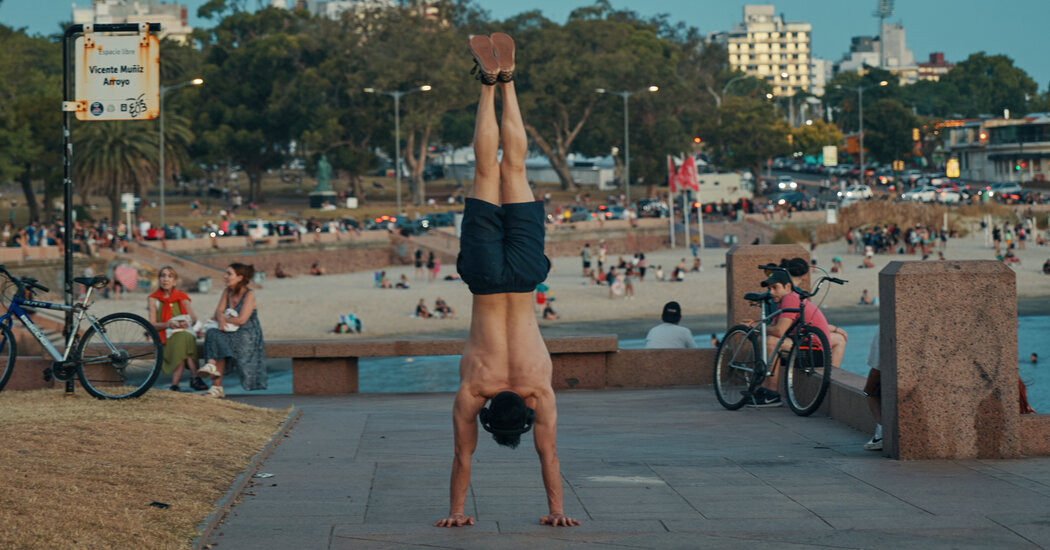For a window into the soul of a city, take a stroll along the waterfront: Think of the Seine walkways in Paris, the Copacabana promenade in Rio or the Charles River Esplanade in Boston. Or the nearly 14-mile palm-fringed ribbon called La Rambla, in Montevideo, the capital of Uruguay.
One of the longest sidewalks in the world, La Rambla meanders along the shimmering estuary Río de la Plata, past beaches, wine bars and purple-blossomed jacaranda trees, statues and sculptures, soccer matches and friends engrossed in conversations over cups of yerba maté.
If you go in the summer — as the Northern Hemisphere shivers in the cold — you may find yourself part of a mass migration of locals toting folding chairs to the promenade, turning it into, essentially, the city’s outdoor living room.
The promenade stitches together different pieces of Montevideo, a city of about 1.3 million, socially as well as geographically. On it, you’ll find Uruguayans from all social strata. It’s “the city’s thermometer,” as Natalia Jinchuk, a Montevideo native and author, described it to me.
With my own thermometer dipping and my imagination stoked, I planned an early-winter long weekend in Montevideo, a flower-speckled city that melds Old World and Modernist architecture, to boost my spirits with my own ramble on La Rambla.
Where friends get together
On a balmy Friday morning, I set out on foot from my home base, the Palladium Business Hotel, at the edge of the fashionable Pocitos neighborhood, and headed toward Parque Rodó, an urban gem of a park a few miles west along La Rambla.
The red-and-white-striped promenade runs between a busy road and the Río de la Plata, a wide waterway separating Uruguay and Argentina. The path follows a roughly west-east axis, changing names as it winds from the Capurro neighborhood, northwest of the Old City to the high-end Carrasco area in the east. The most popular section runs from the Old City to Pocitos.
Heading west on La Rambla, I saw sailboats bobbing outside the century-old Yacht Club Uruguayo. Women sat on a grassy knoll, their young children toddling about. Two friends on a bench appeared to be deep in conversation over bread and strawberries. A couple sipped a cup of maté, a caffeinated drink common in South America, from the same metal straw. Near a busy skateboard park, I passed some food trucks, including Soy Pepe el Rey de las Tortafritas (chuckle-inducing translation: I Am Pepe, the King of Fried Bread). At the Playa de…
Click Here to Read the Full Original Article at NYT > Travel…
